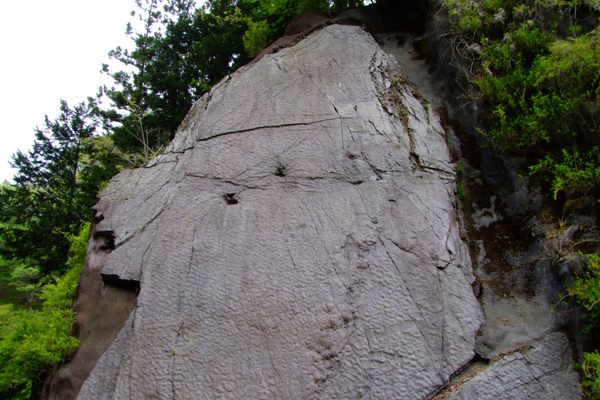About
Along Route 299 in the township of Kanna stands a wall of mountain cliff known as the Sazanami-iwa (“ripple rock”). Discovered in 1953 during the construction of a road, it was initially believed to be just that—a rock with ancient ripple marks; but it later turned out to be something much more.
Often referred to as the “ripple marks of Sebayashi” after the former village it is located in, the rock was thoroughly researched by Gunma University upon its discovery. When its team of academics made a report, it mentioned “strange holes” alongside the ripple marks.
Later, in 1960, the “holes” were identified as dinosaur footprints, the first fossil track to be found in Japan. As it turned out, there were over 50 of them here. The new report attracted curious tourists to the site despite its remote location, receiving 30,000 visitors that year.
Following this, Kanna started to brand itself as a “dinosaur kingdom,” opening a museum called the Kanna Dinosaur Center in 1987, exhibiting local fossils and Mongolian dinosaurs. Notably, it’s also home to specimens of the Sanchūryū, a previously unknown and understudied species of Gallimimus.
Though the museum’s collection is rather impressive, the “dinosaur kingdom” of Kanna remains an obscure destination due to its difficult accessibility. From the nearest bus stop, it takes about an hour by foot to get to the Sebayashi ripple marks.
Related Tags
Hidden Japan: Sado Island, Nara & Kyoto
Explore a different side of Japan.
Book NowCommunity Contributors
Added By
Published
September 25, 2023






















